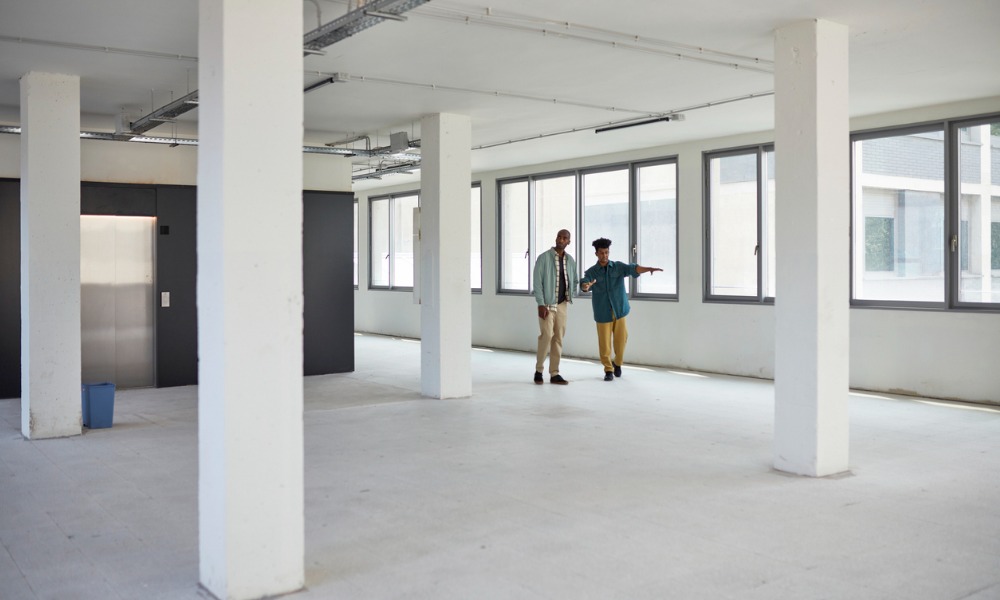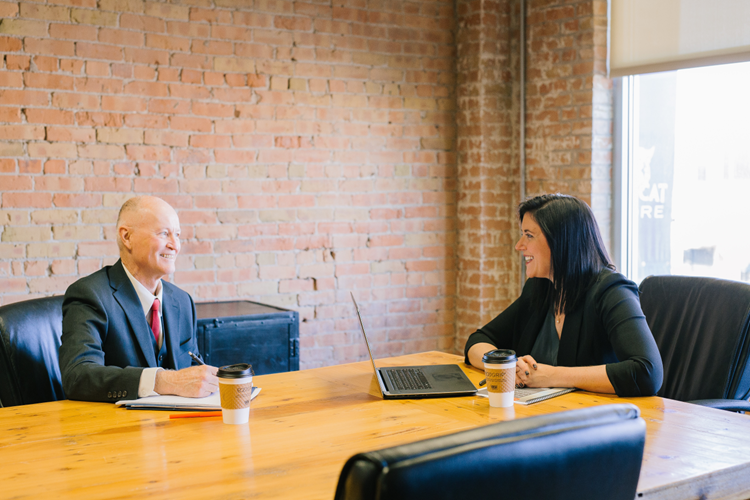Commercial real estate investing is lucrative, but there are risks. Here is how to prepare for them

Commercial real estate investing can be highly lucrative.
It’s important, however, to know the potential return on your investment before you make a purchase. It is also important that you understand the risks involved.
But don’t worry. The more you know, and the more strategies you have, the more likely you are to succeed.
In this article, we will break down what you need to know to get started in commercial real estate investing. We will also look at the major risks, how to calculate a good return on investment, and some of the more profitable commercial real estate investments.
The basics of commercial real estate investing
Like most types of real estate investing, there are numerous reasons that commercial real estate investing is a good idea. You can potentially get consistent returns, generate passive income, and have high growth potential.
While commercial real estate investing is growing in popularity, not all commercial investments are equal. An essential component of success in this arena is knowing when, what, and how to invest your time and money in commercial real estate.
To help you get started, let’s look at some key points you should know before investing in commercial real estate:
- Know the different property types
- Learn about the market area/supply and demand
- Understand market cycles
- Do your due diligence
- Prepare yourself for setbacks
Here is a closer look at each:
1. Know the different property types
Not all property types are the same, which also means that the supply and demand yield, as well as the overall profitability of each, varies significantly.
Commercial real estate investing is essentially classified into five sectors: office, industrial, retail, multifamily, and special purpose. However, there are many other property types. These include hotel, self-storage, land, medical care, and elder care.
Based on the supply and demand of the asset’s location, some of these property types perform better than others. And on a larger scale, some sectors typically perform better than others. It is therefore important to know how to identify the most profitable asset types.
2. Learn about the market area/supply and demand
All markets are different. That’s why it is important to understand that you are investing in a specific area, with its own unique supply and demand. In other words, certain property types might be succeeding on a larger scale but are oversupplied in your area (or vice versa).
That is also why it is critical that you research the market supply in the area you’re eyeing for your commercial real estate investment. If you have identified a type of property that is undersupplied in your immediate area, you can do a feasibility study to determine future growth.
3. Understand market cycles
The profitability of commercial real estate is linked to the health of the overall economy, unemployment rate, and gross domestic product. Therefore, it is important that you understand market cycles. This can steer you away from buying when the market is high and selling when it’s low.
4. Do your due diligence
Due diligence here means conducting thorough research on an investment opportunity. That might include reviewing documents, financials, profit and loss statements, and tax returns from the previous owner. You can also conduct property inspections, a feasibility study, surveys, or any other research.
You can even create a due diligence checklist for yourself, which can include these common items:
- If you want to develop a vacant property, you should confirm that zoning will let you use the property as intended;
- If you want to build new construction, or expand an existing building, determine how many more units a market can support; and
- Familiarize yourself with any costs and permitting procedures with the municipality or city of the property.
You should do your due diligence on more than just the asset. It is also a good idea to do your due diligence on the person, fund manager, or company you are investing with.
5. Prepare yourself for setbacks
There are likely to be setbacks for costs and timelines, so prepare yourself.
Introducing new systems, new construction, renovations, changing management, and increasing rents are all time-consuming. When in your due diligence period, identify potential obstacles and prepare for them. These preparations should include your contingency costs and plan of action.
What is a good ROI for commercial real estate?
A good return on investment (ROI) for commercial real estate depends on multiple factors. These factors include the type of property, the location of the property, the market conditions, and your investment goals. Generally, however, a good ROI for commercial real estate investing is between 8% and 10%.
When it comes to commercial real estate investing, a good ROI is typically higher than the ROI on residential properties. This is because commercial properties have longer lease terms, higher rental rates, and lower vacancy rates.
But remember: a high ROI does not necessarily mean it is a good investment. You must also consider other factors, including market conditions, future growth potential, and potential risks.

Commercial real estate investing: How to calculate ROI
Now, let’s break down how to calculate ROI on commercial real estate investing.
Calculate net operating income (NOI)
When calculating ROI, the first step is to determine the net operating income, or NOI, of the property. The NOI is the gross income generated by the property, minus the operating expenses. Examples of these operating expenses include insurance, property taxes, management fees, and maintenance.
Here is the formula for calculating the NOI:
Gross income – operating expenses = NOI
Determine property value
The next step in calculating the ROI is to find out what the current value of the investment property is. You can do this through a professional appraisal or by comparing recent sales of similar properties in the area.
Calculate capitalization rate (cap rate)
The capitalization rate is a financial metric that is used to calculate the potential return on a real estate investment. To calculate the cap rate, you have to divide the NOI by the value of the property. Here is the formula:
NOI/property value = capitalization rate
Determine ROI
After you have the cap rate and the NOI, you can determine the ROI. You can do this by dividing the NOI by the total investment, which includes the initial cost of the property and additional expenses incurred like upgrades or renovations.
You can use the ROI to measure the profitability of your investment. If you want to determine the ROI on a commercial property, you must divide the NOI of the property by the purchase price. Here is the formula:
(NOI/purchase price) x 100% = ROI
The NOI is the income generated by the investment property after deducting the operating expenses. These expenses include utilities, insurance, property taxes, and maintenance. The purchase price is the amount you paid for the property.
Let’s look at an example. Let’s say you bought a commercial property for $1 million. If the NOI is $100,000, that means the ROI would be 10%. It looks like this:
Return on investment = ($100,000/$1,000,000) x 100% = 10%
In other words, the property generates 10% ROI each year.
What is the most profitable commercial real estate?
High-tenant properties are usually the most profitable commercial real estate. Think of it this way: the more tenants you have, the more protection you get.
High-tenant properties include office buildings, apartment complexes, storage facilities, student housing, and RV parks. Choosing from these high-tenant properties, apartment complexes are the most preferable. If you can secure the maximum number of tenants over the long term, you increase your chances of creating wealth and security.
High-tenant properties are not the only profitable form of commercial real estate. Let’s look at two other lucrative examples.
Triple-net lease
One of the major perks of a triple-net lease property is that there are no management responsibilities. How does it work?
Let’s use as an example a coffee shop, like Starbucks. Let’s say you own the building that Starbucks is in. Starbucks pays you a lease payment of $20,000 per month for 15 years. Under the terms of the triple-net lease, Starbucks would pay for all of the expenses, including your taxes, the building repairs, and insurance.
This makes a triple-net lease not only lucrative, but a great way to invest in commercial real estate since you are not the person managing the property.
High-growth areas
This one is fairly obvious and self-explanatory; however, it is important to keep it in mind when looking at commercial real estate investing.
Naturally, fast-growing markets and other in-demand neighborhoods are much sought after among commercial real estate investors. These areas are the most likely to attract new tenants. And fast. This is especially beneficial if an existing tenant of yours moves out.
What is the risk of investing in commercial real estate?
Like an investment, commercial real estate investing comes with risk. If, however, you know how to mitigate risk, you are likely to receive high yield returns on your investment.
One of the major risks of investing in commercial real estate involves location. If you invest in any real estate, commercial or otherwise, you need the right property type in the right location to be successful. And it is even more important in commercial real estate.
Cities in particular are constantly evolving. What may be a hot spot for commercial real estate may not be in the next 10, 20 years. Changes to the city’s growth or transportation routes, or reductions in public services, can all impact the desirability—and therefore value—of an area and property.
Commercial real estate investing requires thorough research
Compared to other types of investments, commercial real estate investing can be incredibly lucrative. But remember: there are risks. And not all markets or property types are the same. If, however, you follow the tips for getting started in commercial real estate investing and know what to prepare yourself for throughout the entire process, you should find success.
To find out more about buying rental property, get in touch with one of the mortgage professionals we highlight in our Best in Mortgage section. Here you will find the top-performing mortgage professionals across the USA.
Did you find this information on commercial real estate investing useful? Does it make you more likely or less likely to invest in commercial real estate? Let us know in the comment section below.



